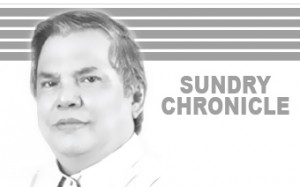Proem
In 1989 I happened to read the book Coleccion De Documentos Ineditos De Ultramar at the Provincial Library. This book contains the original and unedited reports of the participants of the Gen. Miguel Lopez de Legazpi Expedition in the Spanish language.
I can read and understand Spanish in the written form. When I read the different documents, I noticed that the data would not match with the claimed site of the Blood Compact at Bo-ol, Tagbilaran City.To confirm my suspicion I consulted my Spanish language teacher, the Late Remedios M. Del Rosario. She grew up in a Spanish speaking family and had a Master’s Degree in Spanish from the Central University of Madrid, Spain. I also consulted the Late Arturo Fortich who knew how to speak Spanish.
They confirmed that my interpretation and understanding of the documents were correct. From the year 1989, I wrote repeatedly about the erroneous site at Bo-ol, Tagbilaran and that the correct site is Hinawanan, Loay, Bohol.
Year 2004-2005
Finally in the year 2004 the Municipality of Loay, Bohol, through its Municipal Council and Mayor (Leonides Tiongco), petitioned the National Historical Institute (NHI) to arbitrate as to the correct site of the Blood Compact.
This writer, Jes B. Tirol, M.A. {History} and Mr. Emmanuel L. Romanillos, a University of the Philippines (Diliman, Q.C.) professor in history and languages {M.A. History, Gregorian University, Rome} were the advocates of the Loay Side of the controversy. As a geodetic and civil engineer, I concentrated on the technical data while Mr. Romanillos concentrated on historical Spanish records.
The advocates for the Tagbilaran Side were Vice Mayor Rizalino Israel and City Councilor Atty. Danilo Bantugan.
After the so-called “Round Table Conference†at NHI Manila and the on-site inspections at Tagbilaran City and Loay, Bohol with the proper experts, the decision was handed down on June 15, 2015. According to the NHI, citing its legal authority to decide on the matter, the correct Blood Compact Site is Hinawanan, Loay, Bohol.
The Legazpi-Sikatuna Blood Compact occurred on March 25, 1565 on board the flagship San Pedro and the Legazpi-Sigala Blood compact occurred 3 days later on March 28, 1565 at the same locations.
Rationalizing the Situation
I was invited by the Barangay Council of Bo-ol, Tagbilaran City to make a suggestion on what to do with the site at Bo-ol, Tagbilaran.
In their session, I told them the following: There was once a Bo-ol Kingdom that controlled a huge area including Bohol; Tanhay, Negros Or.; Limasawa; Cabalian, Southern Leyte; and Davao Oriental. The central part of the Bo-ol Kingdom was at Tagbilaran Strait between Dauis and Tagbilaran and up to Baclayon.
Your place is called Bo-ol. Nobody will dispute that Barangay Bo-ol is the remnant of the Bo-ol Kingdom.
My proposal is to convert the Bo-ol Site into a “Blood Compact Shrineâ€. A “Santo Niño Shrine†is established in Tacloban, Leyte, why not a “Blood Compact Shrine†at Bo-ol?
The old site will contain all the Blood Compacts that occurred within the Bo-ol Kingdom. We have now the statues representing the Legazpi-Sikatuna Blood Compact. Let us create a diorama representing the other Blood Compacts like the Legazpi-Sigala; Santiago de Garnica and the son of Sikatuna; Magellan-Kolambu; and others.
The Shrine will still be an attraction. What the tourist guides will say will be, “These are the representations of the Blood Compacts within the Bo-ol Kingdomâ€. This one is the Legazpi-Sikatuna Blood Compact. If you want to visit the actual site, you can go to Hinawanan, Loay. This one is the Santiago de Garnica-Sikatuna’s son (do I hear the name Luktób?). If you want to visit the actual site, you can go to Himilián, Loboc, and so on. There were also Captain Sanz and Captain De Goite Blood Compacts.
There will be no conflict of interest if only the tourist guides will be knowledgeable. Bo-ol is the shrine and Hinawanán is the site.
The Terms
Blood compact is Sandúgò in Binisayâ. Celebrate is Saúlog, commemorate is Imáto, and Observe is Timáan.
Celebrate, commemorate, and observe are synonyms. They differ very slightly. Celebrate has emphasis on the joyous festivities. Commemorate looks to the past with sorrow, solemnity, and seriousness of the occasion. Observe is to perform any action that is deemed to be appropriate for the occasion.
Since Tagbilaran City has the “Blood Compact Shrineâ€, which is general in scoop, it is not proper to use the term “Saúlog (celebrate)â€. There is nothing to celebrate (be happy and joyous) about the Blood Compacts because the Spaniards did not honor their side of the compact. The best term is “Timáan sa Sandúgò = Blood Compact Observanceâ€. This term will allow the City to select any date, like March 16.
The best term for Loay, Bohol is “Imáto sa Sandúgò = Blood Compact Commemorationâ€. It is because Loay, Bohol has the correct site and the correct date, March 25, to be celebrated.
The dramatic rendition during the July 22 Bohol Day celebration is the “Saúlog sa Sandúgò†= Blood Compact Celebrationâ€. It is because the Sandúgò ceremony has been converted into a dramatic play and a joyous occasion. In fact every dance presentation will have a deus ex machina wherein the Patron Saint of the town will be presented, which is not part of the real Sandúgò ceremony.
CELEBRATE (SAÚLOG), COMMEMORATE (IMÃTO), OBSERVE (TIMÃAN): HOW TO RATIONALIZE THE BLOOD COMPACT SITE CONFLICT
Topic |

